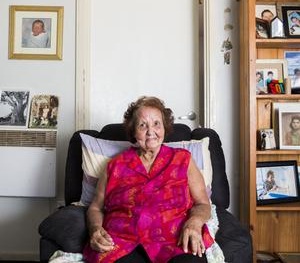
Jessie Street National Women's Library |
42276162418
NSW 2007
nationalwomenslibrary.org.au
nationalwomenslibrary
The Jessie Street National Women's Library
The Jessie Street National Women's Library is a specialist Australian library dedicated to collecting, preserving, and promoting the literary and cultural heritage of Australian women. It serves as a unique repository of women's history, feminist activism, and associated archival materials, with a mission to enhance awareness of the contributions and experiences of women in Australia.
History and Background
The library was established in 1989 to commemorate Jessie Street, an influential early Australian feminist and women's rights campaigner known for advocating for gender equality and Indigenous Australians' rights. Named in her honor, the library reflects Street’s inclusive vision, having campaigned for marginalized groups well before the concept of intersectionality was widely recognized. The institution is operated entirely by volunteers, many of whom are retired feminists and activists deeply connected to the women’s movement and the library’s history[5].
Collections and Holdings
The library houses extensive collections that include:
- Archives of papers from Australian women's organizations
- Personal papers, letters, diaries, and journals of Australian women
- Feminist journals, oral histories, and audio recordings of interviews
- Rare books, including a foundational donation of 500 feminist books and a notable collection of over 110 books related to Virginia Woolf
- Australia’s largest collection of feminist posters
- Documents related to the Louisa Lawson House, a women's mental healthcare center active from 1982 to 1994
- Materials from the former Canberra Women's Archive, donated in 1993
The collection’s expansion has been largely fostered through donations from estates and individuals, sustaining its role as a comprehensive resource for feminist literature and women’s history in Australia[2][4].
Operations and Accessibility
Located within the Ultimo Community Centre in Sydney, the library functions as a community resource accessible to the public and researchers interested in women's studies and history. It continues to operate for the benefit of the broader community by preserving and providing access to a broad range of materials related to women’s cultural heritage and feminist movements[1][3].
Significance
The Jessie Street National Women's Library is more than a memorial to its namesake; it has evolved into a vital institution that preserves the heritage and narratives of Australian women. It plays an important role in documenting feminist activism, social history, and the diverse experiences of women, supporting academic research and public awareness alike[5].
See Also
- Feminism in Australia
- Women’s history
- Archives of Australian women’s organizations
Coordinates: 33°52′40″S 151°11′54″E
[1] https://nationalwomenslibrary.org.au [2] https://en.wikipedia.org/wiki/Jessie_Street_National_Women's_Library [3] https://www.acnc.gov.au/charity/charities/f6826644-39af-e811-a960-000d3ad24282 [4] https://www.womenaustralia.info/entries/jessie-street-national-womens-library/ [5] https://historymatters.sydney.edu.au/2022/10/the-jessie-street-national-womens-library/
Podobné organizace
HER PLACE AUSTRALIAN WOMEN'S HERITAGE AND MUSEUM LTD |
|
Sophia Library |
|
Todays Woman Inc |
|
The Jessie Street Trust |
|
Street Library Incorporated |
Podobné organizace global
Young Ladies Library Association of Plymouth |
|
TFI Digital Archive |
|
GALS GUIDE TO THE GALAXY |
|
FRIENDS OF THE WOMEN'S LIBRARY |
|
THE WOMEN'S HISTORY NETWORK |
Podobně sociální sítě (1672)
Improve Yourself, z. s.1700 |
|
Lysá nás spojuje, z.s.1700 |
|
MING Racing Sports z.s.1700 |
|
NOVITECH Motorsport, z.s.1700 |
|
Rodinné centrum Jasmínka, z.s.1700 |
Více Kulturní/Etnické povědomí
Matice slezská, pobočný spolek v Bystřici nad OlšíBystřice |
|
Za kulturní Třinecko, spolekTřinec |
|
Hrčávka, z.s.Hrčava |
|
Klub zábavy a sportu ZáolšíVendryně |
|
Matice slezská, pobočný spolek v Dolní LomnéDolní Lomná |
Novinky

History Week 2025 Currents of Persistence: Esme Timbery The intricate shellwork of Mrs Esme Timbery, a celebrated Bidjigal artist, is now housed in some of Australia’s most prominent art galleries and museums. Her pieces are part of a long-standing creative tradition at La Perouse, in saltwater Country, where First Nations women have been crafting and selling shell-decorated souvenirs since the 1880s. Though not classified as a traditional Aboriginal art form, shellwork has been passed down through generations of women − mother to daughter, granddaughter to great-granddaughter − preserving both cultural knowledge and creative identity. What began as a domestic craft developed over time into a unique artistic practice and, eventually, a recognised artform. The women of La Perouse, including Esme, kept this tradition alive through changing times, their artistry evolving with shifting fashions and opportunities. In earlier decades, missionaries supported the work by helping find buyers both locally and overseas, ensuring that the women’s skills remained a valuable means of income and cultural expression. The delicate baby shoes, jewellery boxes, and other decorative pieces created by Esme and her predecessors echoed the aesthetic preferences of the Victorian era, when shell crafts were popular in both Britain and Australia. These handcrafted items became must-have mementoes for visitors to La Perouse. Tourists arriving by tram at ‘The Loop’ would stroll the headlands and take in the view − rarely leaving without purchasing a piece of shellwork. For much of the early 20th century, this industry provided one of the few reliable sources of income for the local Aboriginal community. However, by the 1960s, tourism to La Perouse began to wane. With the closure of the tram line and the ferry service, and the rise of mass-produced souvenirs from overseas, the local craft industry faced decline. By 2013, Esme Timbery was among the few remaining shellworkers in La Perouse still practising the tradition. She began creating commissioned works and entering contemporary art exhibitions, gaining recognition for her distinctive artistry and helping to reposition shellwork in the world of fine art. Esme’s talent took her well beyond her coastal roots. She received the New South Wales Indigenous Art Prize, collaborated with the fashion label ‘Romance Was Born’, and saw her work exhibited nationwide. Today, her pieces are part of major public collections, including those of the National Gallery of Australia, the Art Gallery of New South Wales, and the National Museum of Australia. Mrs Timbery passed away in 2023 at the age of 92, leaving behind not only a remarkable body of work but a cultural inheritance crafted in salt and shell. Her legacy had already been formally acknowledged when the University of New South Wales named its Creative Practice Lab in her honour − the first building at the university named after an Aboriginal woman. In 2022 Transport for New South Wales introduced a river-class ferry on the Sydney Ferries Network which bears her name. For History Week 2025: Water Stories, Esme’s journey is a powerful reminder that some of our richest histories live where land meets sea and in the language of shells. Shells weren’t just beautiful objects to her; they were storytellers. Each one gathered from the shore held a memory, a spirit and a connection to Country. References ‘Celebrating UNSW Women: Esme Timbery’, UNSW, https://www.celebratingwomen.unsw.edu.au/profile/esme-timbery ‘Collection Highlights: Shellwork Sydney Harbour Bridge’, National Museum of Australia, https://www.nma.gov.au/explore/collection/highlights/shellwork-sydney-harbour-bridge Art Gallery of New South Wales – Featured Artists, https://www.artgallery.nsw.gov.au/collection/artists/timbery-esme/ Image: Courtesy of Mitchell Library, State Library of New South Wales, Aunty Esme Timbery at home, 20 January 2018 / photograph by Joy Lai #HistoryWeek2025 (fb)

A silken thread through hard times: the Women’s Cooperative Silk Growing and Industrial Association Water has always been central to life − not just as a biological necessity, but as a force shaping human history. The Australian landscape, marked by cycles of flood, drought, and fluctuating seasons, has continually challenged communities and industries. One such story is that of the Women’s Cooperative Silk Growing and Industrial Association − an initiative by a group of visionary women in 1890s New South Wales who attempted to weave social reform and economic survival together through sericulture. During the late 19th century, Australia experienced a severe economic depression following four decades of growth. Unemployment soared, particularly among unskilled workers and many women found themselves abandoned and destitute. In this climate of despair, the idea of a women-led silk industry emerged as both a practical and symbolic solution. It was seen not just as a commercial venture, but a philanthropic and patriotic effort to empower women through meaningful, self-sustaining work. The Association was formally launched in 1893 under the leadership of Mary Sanger Evans nee Creed, a determined advocate for women’s economic independence. Supported by prominent Sydney feminists, including Lady Darley, Mrs Maybanke Wolstenholme, and Edith Fry, the group aimed to establish a silk-growing cooperative that would provide employment for women while developing a viable Australian silk industry. With support from the New South Wales government, the Association purchased a 40-acre property in Wyee in 1894. Despite initial optimism, the farm struggled from the outset. At the 1896 annual general meeting held in May of that year votes of thanks were accorded to the ‘ladies, who obtained the promise of a renewal of the Government grant [and] to Mrs Evans, the retiring managing secretary’ who was stepping down ‘owing to the want of health’. The annual report referred to the exceptionally dry seasons, blight, insects, pests of different kinds, the withholding of the Government’s promised grant and the failure of many shareholders to keep up their promised monthly payments. The report went on to add that in spite of these drawbacks some good work had been done and the mulberry trees, which are the main object of the Association, ‘promise well’. However, by 1900, the Association was formally dissolved. Nevertheless, the effort was not in vain. The Association's vision reflected a broader movement of women’s empowerment and cooperative enterprise. The choice of silk farming − a traditionally female-dominated industry in countries like India, China, and Japan − aligned with global practices, and its potential as a cottage industry made it an ideal candidate for rural and domestic settings in Australia. Ultimately, the Women’s Cooperative Silk Growing and Industrial Association did not succeed in establishing a permanent silk industry or achieving long-term financial independence for its members. Yet, it stands as a powerful historical example of social idealism, feminist enterprise, and the challenges of building sustainable industries in an unforgiving environment. In a country where the availability of water has often determined the success or failure of human endeavour, the story of this Association is another thread in the tapestry of Australia’s environmental and social history. References Christine Yeats ‘The Silk Road’, SL Magazine Summer 2019-20, https://nla.gov.au/nla.obj-3512589888/view Christine Yeats ‘The Women's Cooperative Silk Growing and Industrial Association’, Lake Mac Libraries, https://history.lakemac.com.au/narrative/4980 Image: from SL Magazine Summer 2019-20 State Library of New South Wales #HistoryWeek2025 (fb)

Poslední komentáře
What a fantastic initiative! Preserving the history and accomplishments of Australian women is so important. Proud to support the Jessie Street National Women's Library! 💜📚detail |
|
Can't wait for the Lunch Hour Talk with Margaret Ann Spence! It’s crucial that we continue discussing the sacrifices women have made in our political landscape. Let's keep amplifying women's voices! 🙌✨detail |
Poslední diskuze
1. How can libraries like the Jessie Street National Women's Library effectively engage the community in preserving and promoting the history of Australian women?Odpovědí: 3, Naposledy před 1 den detail |
|
Odpovědí: 3, Naposledy před 1 den detail |
|
2. In what ways can the Jessie Street National Women's Library collaborate with other organizations to enhance awareness around social justice issues for Aboriginal and Torres Strait Islander peoples?Odpovědí: 3, Naposledy před 1 den detail |
V okolí
4.5
NSW 2007
O společnosti
- A23, A54 -
Welcome to Jessie Street National Womens Library To keep womens words womens works alive and powerful Ursula K Le Guin Please noteAboriginal and Torres Strait Islander people should be aware that this website may contain images voices or names of deceased persons in photographs film audio recordings or printed material. Jessie Street National Womens Library is a unique specialist library dedicated to the preservation of Australian womens work words and history. The Library was established in 1989 and is named after Jessie Street a lifelong campaigner for womens rights the peace movement and the elimination of discrimination against Aboriginal people. The Librarys charter is to collect preserve and promote knowledge and understanding of the cultural heritage of all women social justice for Aboriginal and Torres Strait Islander peoples international friendship and peace.
Kulturní/Etnické povědomí **Historická muzea**




















